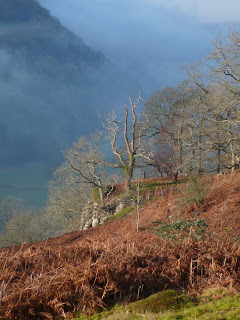





Little Langdale
In this painting of Little Langdale the esoteric atmosphere I was trying to create was of an isolated farmhouse, surrounded by the mountains, abandoned and slowly decaying, there are no animals, the roof is beginning to sag and the wilderness is returning to the fields. All is not lost though, the roof is intact. Perhaps someone will make it a home once again.
The other meaning of the word atmosphere in this painting is created by the use of colour, tone, and detail. These are the three essential ingredients to help you create a sense of recession in your painting, and I make no apology for referring to them time and time again. Keep the distant features cooler in colour, lighter in tone and with less detail than the foreground and middle distance features and you will be well on your way to inviting your viewer into the picture,
You can read more about this aspect of painting and many other tips in my book, Painting with Pastels, published by Search Press. There is also a DVD of the same name to accompany the book and a special offer on the two together.

Misty marsh in Pan Pastel
The sparkle of light on water and a gauze of mist lends enchantment to almost any scene.
In this painting the misty effect was achieved with Pan Pastels on a sheet of white Clairefontaine Pastel Mat paper.
The method of applying the Pan Pastel colour with sponges naturally lends itself to soft edges. The water is mainly the paper left untouched but the highlights on the clouds were created with a small Sofft
tm tool which looks like a plastic palette knife with a sponge sleeve and is very effective for smaller areas.
The challenge of working with Pan Pastels, which does not lend itself readily to creating sharp edges, has made me re-evaluate the amount of fine detail I include in a painting and has ‘loosened up’ my recent work. Working with different methods of applying colour is a stimulus that can get you out of a rut.
Go on try something new.
I will be running a pastel painting course in Cheddar next autumn if you would like to learn more about my methods of working.